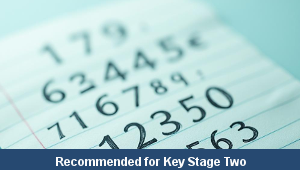Digit Blocks

This maths teaching pack for Key Stage Two gets the children to practise using concrete objects and pictorial diagrams to represent the place value of the digits in different numbers to one thousand to indicate their hundreds, tens and ones.
The class can randomly select different hundreds, tens and ones to visually show their matching values when recorded as three digit numbers.
Download this teaching pack including classroom activities and an interactive presentation to practise using concrete objects and pictorial diagrams to represent the place value of the digits in different numbers to one thousand to indicate their hundreds, tens and ones
Activities in this teaching pack include differentiated worksheets to select different combinations of hundreds, tens and ones to make matching three digit numbers to three hundred for support ability levels and to one thousand for core and extension ability levels.
The interactive presentation gets the children to explore how to use concrete objects and diagrams to represent the place value of different numbers to one thousand.
This lesson is part of a maths scheme of work to get the children to investigate the place value of the numerical digits in numbers with different combinations of hundreds, tens and ones. There are teaching activities for shared learning, differentiated worksheets to support independent learning and interactive presentations to introduce concepts and key skills.
-

Maths Arithmetic Assessment
Assess abilities in solving arithmetic number problems for addition, subtraction, multiplication and division when working with informal and formal written calculations
-

Environment
Identify and describe some of the special landscapes and locations that can be found in the world and reflect on how they can be protected and preserved for the future
-

Silent Letter Words
Explore and illustrate the meanings and spellings of some different words with silent letters when using them in a range of topics and scenarios
-

Complaint Letters
Explain and model how to format and structure writing when composing letters of complaint about different issues and scenarios
